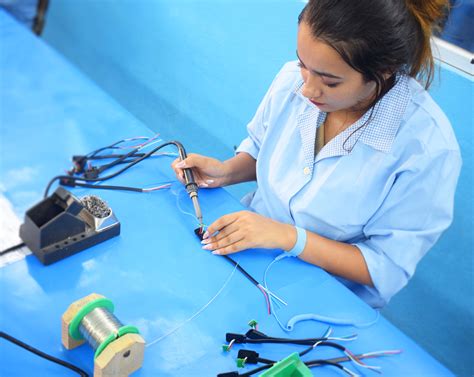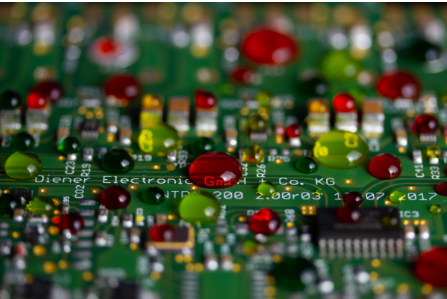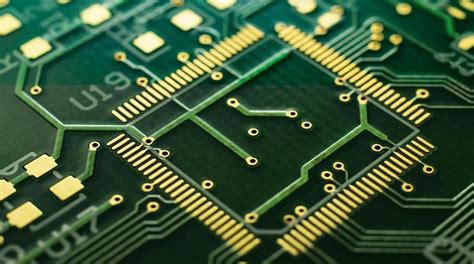Optimizing PCB and Assembly Processes for Enhanced Efficiency

Key Takeaways
In the realm of PCB assembly and manufacturing, it is essential to grasp not only the intricacies of design but also the various methodologies that enhance efficiency. One significant aspect is the symbiotic relationship between innovation and efficiency, as adopting cutting-edge solutions can drastically impact overall productivity. Streamlining both PCB assembly and fabrication processes can lead to notable reductions in lead times and material waste. Additionally, focusing on cost-reduction strategies within the PCBA framework allows manufacturers to enhance their competitive advantage while maintaining quality standards.
Integrating automation into the PCB assembly process stands out as a transformative strategy. Through utilizing advanced equipment and robotics, manufacturers can achieve higher accuracy and throughput. Embracing such innovations not only keeps production lines efficient but also helps mitigate human error, ensuring that each unit produced meets the rigorous quality requirements of today’s market.
Furthermore, implementing robust quality control measures is crucial for enhancing product reliability in PCBA processes. Regular monitoring and testing at various stages of assembly ensure that products are not only built correctly but also perform optimally under real-world conditions. As we look to the future, embracing emerging technologies will be pivotal in revolutionizing PCB design and assembly methodologies, ultimately paving the way for an era of unparalleled efficiency in electronics manufacturing.

Understanding the Basics of PCB Design and Assembly
The world of PCB design and assembly is a complex yet pivotal part of the electronics manufacturing industry. Printed Circuit Boards (PCBs) serve as the backbone of electronic devices, providing the physical support and electrical connections for various components. The pcb assembly (PCBA) process involves integrating these components onto the PCB to create a functional electronic product. Understanding the fundamental principles of these processes is crucial for achieving optimal results.
In essence, PCB design begins with conceptualizing the layout, where engineers must carefully consider factors such as component placement, trace routing, and adherence to electrical standards. Effective design assures not just performance but also facilitates ease during assembly. For instance, optimizing component density can lead to improved space utilization, but care must be taken to maintain soldering accessibility.
The pcba process typically follows—a meticulous operation that may include various techniques like surface mount technology (SMT) or through-hole technology (THT). Each method has its merits; while SMT allows for smaller components and faster production rates, THT can yield robust connections especially in mechanically stressed applications.
Moreover, it is essential to recognize that both design and assembly require rigorous testing for quality assurance. Early error detection can save significant time and resources in production phases.
“Investing time in upfront PCB design will pay dividends in assembly efficiency.”
Table 1: Key Components in PCB Design and Assembly
| Component | Description |
|---|---|
| Layout | Arrangement of electrical components on a PCB |
| Trace Routing | Pathways that connect components electrically |
| Soldering Techniques | Methods used for attaching components to PCBs |
| Testing Procedures | Processes that ensure product functionality |
By mastering these foundational aspects of PCB design and assembly, manufacturers can drive enhancements in productivity while minimizing costs—all pivotal for thriving in a highly competitive market.
Key Challenges in PCB Manufacturing and Assembly Processes
The landscape of PCB manufacturing and assembly is rife with various challenges that can significantly impact efficiency and profitability. One primary obstacle is the complexity of designs, as modern electronic products often require intricate layouts, leading to difficulties in pcb assembly. Managing supply chain disruptions presents another challenge; sourcing high-quality materials that meet stringent performance standards can be both time-consuming and costly. Moreover, the need for rapid prototype development adds pressure to production timelines, thereby increasing the risk of errors during the PCBA processes. Another critical issue is ensuring consistency in quality control; as designs become more sophisticated, maintaining uniform standards during both pcb fabrication and assembly becomes essential yet challenging. Additionally, the integration of new technologies can create a learning curve for staff, delaying the full realization of anticipated efficiencies. Addressing these hurdles requires manufacturers to adopt multifaceted strategies that prioritize both productivity and quality while navigating the intricate environment of today’s electronics industry.
Innovative Techniques to Streamline PCB Production
In the electronics manufacturing landscape, optimizing PCB assembly processes is vital for achieving high efficiency and maintaining product integrity. One effective approach to streamlining PCB production involves implementing advanced design techniques, such as using design for manufacturability (DFM) principles, which can help identify potential production issues early in the process. Moreover, incorporating sophisticated software tools that facilitate automated design rule checking can significantly reduce errors and enhance overall productivity. Utilizing surface mount technology (SMT) also plays a crucial role, as it minimizes the board space required while allowing for more complex designs. With a strong focus on enhancing efficiency, leveraging modular design principles enables manufacturers to create flexible assembly processes, reducing downtime during production shifts. Additionally, adopting rapid prototyping techniques can expedite the testing phase of PCBA, allowing for quicker iterations and feedback cycles. By continuously embracing innovations and prioritizing effective communication between design and manufacturing teams, companies can ensure that they maximize their potential while minimizing costs and improving product quality in the dynamic world of electronics.
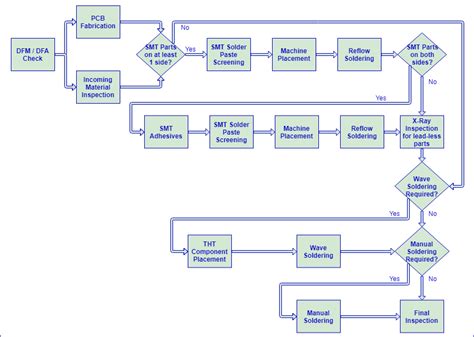
Integrating Automation in PCB Assembly for Greater Efficiency
The integration of automation in PCB assembly processes is revolutionizing the electronics manufacturing landscape, providing significant advantages in terms of efficiency and consistency. By employing advanced robotic systems and artificial intelligence, manufacturers can achieve a higher throughput while minimizing human error. PCBAs benefit from precision automation techniques, which ensure that components are placed accurately and effectively, leading to improved quality of the final product. Automation not only enhances speed but also allows for real-time monitoring of the assembly line, providing immediate feedback and adjustments that ultimately lead to reduced waste and lower costs. Additionally, smart automation solutions facilitate flexibility in production runs, enabling manufacturers to adapt quickly to changing market demands or new product introductions. As companies strive for continuous improvement, embracing automated systems within pcb assembly operations will be crucial for maintaining a competitive edge in an ever-evolving industry. By leveraging these technologies, businesses can foster a culture of innovation and excellence, paving the way for future advancements in PCB design and manufacturing processes.
Cost-Reduction Strategies in PCB Fabrication and Assembly
In the competitive landscape of electronics manufacturing, implementing effective cost-reduction strategies in printed circuit board (PCB) fabrication and assembly is essential for sustaining profitability while maintaining high quality. One approach involves optimizing material procurement for PCB assembly (PCBA), ensuring suppliers provide both cost-effective solutions and high-quality raw materials. By leveraging bulk purchasing agreements, manufacturers can negotiate better rates, reducing the costs associated with component acquisition. Additionally, adopting design for manufacturability (DFM) principles can help engineers create layouts that minimize waste and streamline the assembly process. The integration of advanced technologies such as automation plays a crucial role in this optimization; for example, automated pick-and-place machines enhance precision and increase throughput in the PCBA process. Moreover, investing in training for staff can significantly improve assembly line efficiency, allowing workers to identify and rectify issues faster, which ultimately leads to lower production costs. By focusing on these innovative strategies, manufacturers can enhance not only their efficiency but also their bottom line while ensuring the production of reliable electronics.

Quality Control Measures for Enhanced Product Reliability
Ensuring the reliability of products in the PCB assembly process is paramount, especially in industries where precision is critical. Implementing quality control measures throughout the stages of PCB manufacturing and assembly can significantly mitigate the risks associated with defects and failures. For starters, adopting automated optical inspection (AOI) systems allows for real-time monitoring of solder joints and component placements, ensuring that each PCBA meets stringent quality standards before moving to the next phase. Additionally, routine functional testing of assembled boards enables manufacturers to verify performance under various conditions and identify potential issues early in the production cycle. The use of comprehensive documentation throughout the pcb assembly process also plays a crucial role; maintaining detailed records of quality checks ensures traceability and accountability. Furthermore, engaging cross-functional teams that include design engineers, assembly line workers, and quality inspectors can foster a culture of continuous improvement, where feedback loops lead to enhanced processes and products. Ultimately, integrating these robust quality control measures will not only enhance product reliability but also contribute to long-term cost savings and customer satisfaction in the dynamic landscape of electronics manufacturing.
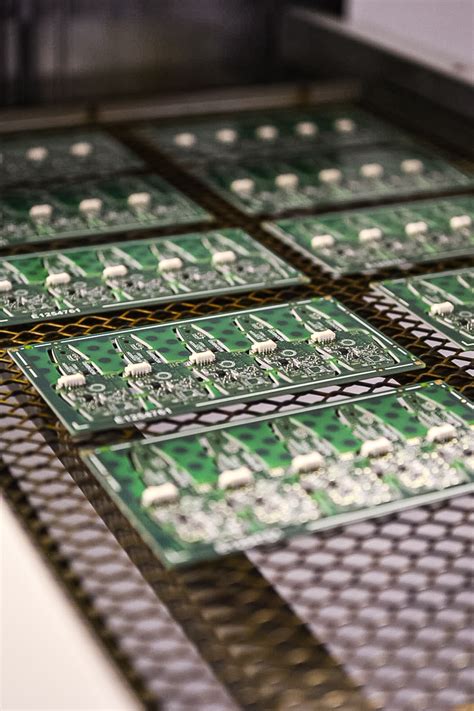
The Role of Technology in Optimizing PCB Processes
The integration of technology into PCB assembly processes has significantly transformed the landscape of electronics manufacturing. Advanced technologies such as automation, machine learning, and IoT have paved the way for notable improvements in the efficiency and effectiveness of pcba operations. For instance, automated assembly lines equipped with high-speed machinery allow for quicker placement of components, resulting in faster production timelines while minimizing human error. Moreover, the implementation of smart sensors within these systems enables real-time monitoring and data collection, which facilitates proactive maintenance and immediate troubleshooting during pcba operations. These innovations not only streamline workflows but also contribute to a reduction in production costs and enhance overall product quality. Additionally, leveraging software solutions for design simulations can optimize layout configurations before manufacturing begins, thereby reducing iterations and ensuring compatibility with assembly processes. The marriage of these innovative technologies with traditional PCB manufacturing techniques creates a robust environment for continuous improvement and competitiveness in an ever-evolving market. As manufacturers adopt intelligent solutions, the potential for achieving higher reliability and enhanced performance in pcb assembly will only expand, reflecting the critical role that technology plays in this sector.

Future Trends in PCB Design and Assembly Methodologies
As the electronics industry continues to evolve, future trends in PCB design and assembly methodologies are expected to significantly reshape the landscape of pcba processes. One pivotal trend is the increased emphasis on environmentally friendly practices; manufacturers are progressively adopting green PCB technologies to minimize waste and energy consumption during production. Additionally, the integration of advanced materials, such as flexible substrates, offers new avenues for designing more versatile products that cater to diverse applications. The implementation of smart manufacturing techniques, including real-time monitoring and predictive analytics, will further enable companies to enhance efficiency in their pcb assembly operations by quickly identifying and addressing potential bottlenecks. Furthermore, as consumers demand faster turnaround times and higher quality products, methodologies such as Design for Manufacturability (DfM) and Design for Assembly (DfA) are gaining traction; these approaches prioritize ease of production during the design phase itself. Overall, staying abreast of these trends will be vital for manufacturers aiming to deliver superior quality while maintaining competitive edge in the ever-changing market landscape.
Conclusion
In summary, optimizing PCB and assembly processes is essential for modern electronics manufacturing to remain competitive. Through the adoption of innovative strategies and advanced technologies, companies can significantly enhance their efficiency in PCB assembly or PCBA. This involves a continuous evaluation of manufacturing workflows, which helps in identifying bottlenecks and areas ripe for improvement. By integrating automation into the PCB assembly process, manufacturers can streamline operations, reduce human error, and ensure greater consistency in product quality. Furthermore, a strategic focus on cost-reduction measures, such as material sourcing and waste minimization, can lead to significant financial gains while maintaining high standards of reliability. As the industry evolves, keeping an ear to emerging trends in PCB design and advanced assembly methodologies will be crucial for businesses aiming for sustainable growth. Therefore, these optimized processes not only key to improving efficiency but also play a vital role in enhancing overall product quality in the booming electronics sector.
FAQs
What is PCB assembly?
PCB assembly, or PCBA, is the process of assembling electronic components onto a printed circuit board (PCB) to create functioning electronic devices. This involves soldering components like resistors, capacitors, and integrated circuits onto the PCB.
Why is the efficiency of PCB assembly important?
Efficiency in PCB assembly is crucial as it directly impacts production timelines and costs. By optimizing the process, manufacturers can reduce waste and enhance output quality, leading to higher profitability.
What are common challenges in PCB assembly?
Challenges often include managing component placement accuracy, dealing with thermal properties of materials during soldering, and ensuring quality control throughout the production process. Addressing these issues effectively can significantly improve the overall efficiency of PCBA.
How can automation enhance PCB assembly processes?
Integrating automation into PCB assembly streamlines production operations by reducing manual errors, speeding up component placement and soldering processes, and allowing for consistent quality control measures.
What cost-reduction strategies can be utilized in PCB fabrication?
Strategies such as sourcing components in bulk, optimizing designs for manufacturability, and employing lean manufacturing principles can help reduce costs during both PCB fabrication and assembly processes.

